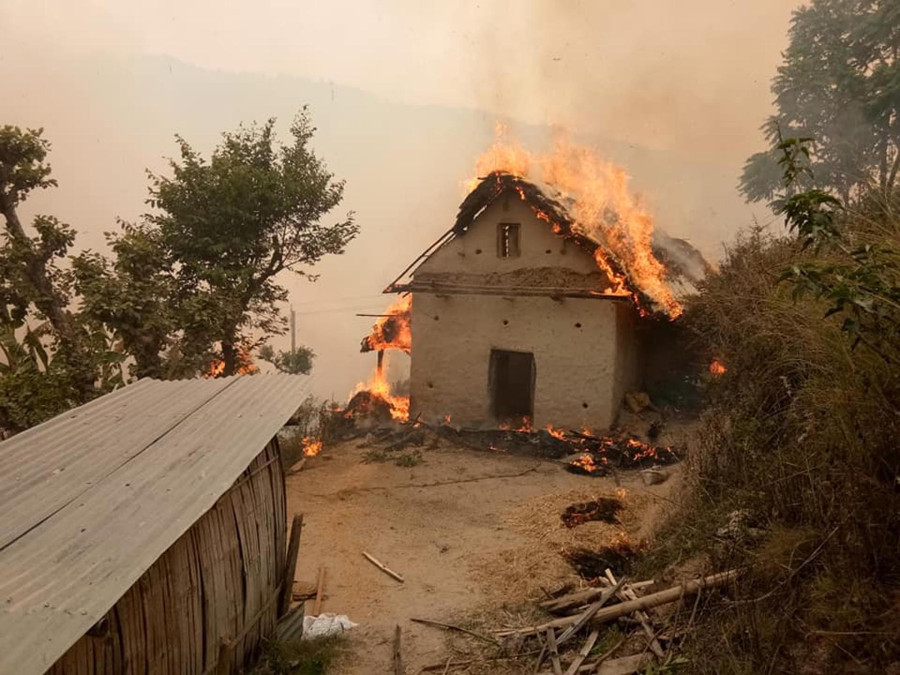Editorial
Playing with fire
As local units are short of firefighting equipment, we are at a perennial risk of loss of life and property.
On Monday evening, the day of Gai Tihar, a massive fire broke out at a house in Putalibazar Municipality-1, Syangja. The police, the army and the municipality’s fire brigade were summoned within minutes. The police came first and joined the locals in their desperate attempts to put down the fire with whatever equipment they had. Then the army arrived and began the rescue work in a slightly more organised manner. But the fire truck, which was less than a kilometre away from the incident site, took almost an hour to get there. By then, the 50-year-old house was already a skeleton of baked stones and charcoaled saal beams.
As much as the loss of property to the fire, what shocked the Putalibazaar locals was the municipality’s apathy to quick disaster response. What is the point of paying taxes to a municipality that cannot send a fire truck on time despite repeated pleas from the victims and civil society members, they asked. What was also odd during the fire incident in Putalibazar was how ineffective the police, the nation's security institution closest to the civilian population, was in rallying local support in rescue. On their part, the locals who had gathered at the incident site in the thousands were mostly a ramitey crowd, preferring to take videos on their mobile phones rather carrying bucketfuls of water to douse the fire.
The inefficient handling of the fire in Putalibazar is symptomatic of the malaise in Nepal’s disaster preparedness. Even after the country adopted the federal structure, with substantial governance power devolved to the local level, a significant number of local bodies are without fire engines, even in urban areas. Even the ones equipped with such engines do not have the required human and financial resources to utilise them. A fire engine comes with significant operational cost, which poorly resourced rural municipalities often cannot bear.
With the onset of winter, the risk of home fire incidents spikes manifold, with increased usage of electric heaters and coal to warm home interiors. After the season of home fires comes the season of wildfires, when forests across the country become sites of uncontrollable inferno. This calls for higher preparedness in large-scale firefighting. Most local levels across the country, however, are either under-resourced to maintain firefighting personnel or are just indifferent to this fundamental necessity.
A 2021 report showed Koshi Province had just 20 fire engines while Madhes had nine, Gandaki had nine, Lumbini had 10, Karnali had five and Sudurpaschim nine. The numbers might have slightly increased in some provinces in the past two years as local and provincial governments have allocated budgets for their purchase. However, the pace with which the local units are equipping themselves with firefighting systems remains quite slow for a country that on average sees the death of 77 people a year in fire incidents. As dozens of municipalities and hundreds of rural municipalities in Nepal remain without even basic firefighting equipment, we are at a perennial risk of loss of life and property. Every rupee that goes into securing people’s lives and livelihoods will be a worthy investment.




 10.12°C Kathmandu
10.12°C Kathmandu














